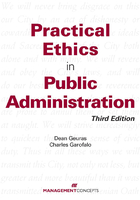We tend to think of distilling as a rural phenomenon, something that happens in the rolling bluegrass hills of Kentucky near crystal clear streams where retired racehorses leisurely chew grass. But, in fact, the history of distilling in America is as much an urban story as it is a rural one, of northern states as well as southern states, of port cities as well as midwestern farmlands. Americans have prided themselves often on their moral integrity, which has placed liquor producers on the wrong end of the official record, and this has meant that the history of whiskey is cloudy at best. Still, it is certainly more significant, and colorful, than what is in textbooks.
Consider the Boston Molasses Flood of 1919, when a distillery operating on the waterfront lost a vat of ingredients. The tank ruptured, sending a fifteen-foot-high tidal wave of molasses through the streets, tearing buildings from their foundations and killing twenty-one people. Imagine a tidal wave of sugary liquid large enough to level a neighborhood, and you might get a sense of the scale of the urban distilling that used to go on in Boston and other large cities throughout the United States. And while distilling is starting to return to places outside of Kentucky, it's interesting to look back at whiskey's forgotten history for clues to understanding our own culture. Whiskey itself is liquid history, a reminder of the place and time of its making, and if one could drink a glass from every era in American whiskey history, their story might read something like this.
The first distillery in the United States was established by the Dutch on Staten Island, in present-day New York City, in 1640. It was described as a brandy distillery, though many historians agree that the still was producing whiskey, since it is unlikely that settlers would have found enough native fruit to support brandy production. When the British seized New Amsterdam in 1664, business leaders opened several distilleries to process the sugarcane and molasses arriving on ships from the Caribbean. Unlike the French and Spanish, who focused their explorations on finding fur or gold, the British intended to set up industry, and they did this through the rum trade. Throughout the seventeenth and eighteenth centuries, New York rum distilleries serviced not only the major cities of the northern colonies, but also the "triangular trade" that brought rum to Africa, slaves to the Caribbean, and sugarcane to the North. Rum also became a commodity for cross-Atlantic trade, creating an opportunity for supplies and travelers to cross the ocean and enriching the British colonies. A 1766 map illustrates very little development in Brooklyn, other than a large distillery complex in Brooklyn Heights standing among the scattered houses in the woods and marshes. King George III commissioned the map, and the fact that Livingston Distillery was the only industry highlighted may speak to the Crown's interests in distilling. By 1791, when records become available, the young United States was importing 7,194,606 gallons of molasses and producing 513,234 gallons of domestic spirit. The plan to develop American colonies via the liquor trade was so successful, in fact, that at a certain point, the residents of the British colonies felt like they no longer needed to pay for the support of the motherland, and fought the Revolutionary War to prove the point.
After the war, Alexander Hamilton, the first secretary of the treasury, was tasked with determining how the young government would pay for the limited services the new Constitution prescribed. The subject of taxes was a delicate one, with all that tea still steeping in the Boston Harbor, and so Hamilton proposed pinning a tax on spirits-a very American sleight of hand that shifted the debate from economic terms to moral ones.
However, one man's sin is another man's livelihood, and the farmers working small plots of land in the western frontier around Pittsburgh objected. These men weren't commercial distillers so much as yeomen moonshiners, tending to a copper pot over a fire, situated near small cornfields a long day's journey to town. Out on the frontier, it was considerably more difficult to deliver acres' worth of grain to market than it was to distill the grain at home and travel with a jug of spirit. This is how whiskey first grew in popularity-it became a convenient mechanism for farms large and small to monetize their harvest. Then, as relations with the British began to sour, whiskey became the spirit of choice across the colonies: It was made and drunk locally, and not dependent on British influence or tastes.
These frontier farmers didn't think of their business as immoral. And furthermore, the rural farmers felt disproportionately penalized. Hamilton, a New Yorker, was surely aware that the large urban distilleries would have been able to afford the proposed excise tax, which was regressive and so decreased as production increased.
Hamilton's tax passed in 1791, and over the following years tensions between farmers and tax collectors grew. The farmers of Pennsylvania famously retaliated in a series of mostly nonviolent confrontations, which took place from 1791 to 1794, known to history as the Whiskey Rebellion. This mostly manifested itself in tax dodging and harassing tax collectors, but in the spring of 1794, a number of subpoenas were issued, and things got ugly. About 600 distillers and supportive militia banded together and laid siege to Bower Hill, the fortified home of General John Neville, a large-scale distiller turned tax collector, who was aiding the U.S. Marshal with a small group of soldiers. The siege lasted two days, and Neville went to hide in a nearby ravine. The rebels captured the marshal and commander of soldiers, which was seen as a victory, even though the hostages soon escaped. After the successful raid on Bower Hill, the cause of the whiskey rebels became more generally the cause of poor farmers in western Pennsylvania, and talks of secession or attacking the wealthy town of Pittsburgh caused President George Washington to send in nearly 13,000 troops, an enormous show of force (the population of New York at the time was only 33,000).
With the arrival of Washington's troops, the rebellion dematerialized and federal hegemony was established. But the federal government's ambivalent relationship to whiskey can be seen in that early conflict: its moral disapproval, its dependence on excise tax revenue, and its consequent suspicion of outlaw distillers and tax evaders. Over the following centuries, the federal government kept the whiskey distiller in its sights, holding it back with one hand and picking its pocket with the other.
As for the frontier farmers of the young Republic, their complaints were assuaged (temporarily at least) by the election of Thomas Jefferson, who ran for president in 1800 on a platform of abolishing the excise tax. Like George Washington, whose Mount Vernon distillery made as much as 11,000 gallons a year, Jefferson knew the economic potential of whiskey. When he was governor of Virginia, he offered sixty-acre plots in the western part of his state to anyone who would grow corn. Sixty acres of corn was far more than any family could eat, but enough to support commercial distilling. In 1792, this part of Virginia became the fifteenth state: Kentucky.
A SELECTIVE TIMELINE OF WHISKEY HISTORY
While rum was the predominant distilled spirit of the British colonies in the 1700s, whiskey emerged as the American drink of choice soon after the Revolutionary War. American distillers spent much of the first half of the 1800s developing styles of whiskey-notably bourbon and rye-and much of the second half protesting, accommodating, and often skirting government regulation and taxation. Whiskey production practically ceased in 1920, with the arrival of Prohibition, and when it returned, it was quickly consolidated by a handful of large corporations. Since the turn of the millennium, American whiskey has undergone a resurgence, this time led by small craft distillers.
During the next fifty years, settlers poured into Kentucky through the Cumberland Gap, which sits at the border of Kentucky, Tennessee, and Virginia. At first, they sent wagon trains of whiskey and herds of hogs back east on the same roads. But carting whiskey over the mountains proved difficult, and so distillers concentrated in the northern part of the state, where access to the Ohio River allowed whiskey makers a navigable trade route to the port city of New Orleans. In those days, whiskey was often unaged, but drinkers in New Orleans found that of the whiskey that did sit in barrels, that which came from the farthest away tasted the best (perhaps because it had been jostled the most and baked in the sun for the longest). These barrels were from the highest navigable point on the Ohio River, a flat area known as Limestone (today Maysville), where whiskey from much of eastern Kentucky landed to go to market. In 1786 there were six counties in the territory that would become Kentucky. The farthest east, and the highest up the river, was Bourbon County.
Within seven years, the county would assume its present-day boundaries, though the general area was still known as "Old Bourbon"-or at least its whiskey was described as being from there. Barrels with the word bourbon on the heads came to be prized in Francophile New Orleans (the county name honored the French for their help in the Revolutionary War, and the bourbon name may have suggested expensive aged French spirits, perhaps an early marketing strategy more than coincidence). Barrels were hard to come by in rural places, and old barrels were charred to sterilize the wood and remove bacteria, but this also had a mellowing effect on the whiskey inside, acting as a filter and infusing it with the caramelized sugars of the wood.
Today, many bourbon drinkers still claim that bourbon must come not just from Kentucky but from Bourbon County, but this makes no sense: There haven't been active distilleries in the smaller, present-day Bourbon County for at least a hundred years. There were many distilleries there in the early 1800s, and getting whiskey to market would have been an easy trip down the road still known as the Maysville Pike from Paris (formerly Bourbonton). Historians seem divided on whether bourbon gets its name from the larger territory, the present-day county, or something else entirely (one historian suggests the whiskey gets its name from Bourbon Street in New Orleans, and has nothing to do with Kentucky at all). In any case, most distillers moved west in the mid-1800s, and Kentucky's distillers are now concentrated in the western part of the state.
In the northeastern states, whiskey was made primarily from rye or a mixture of rye and corn. It was distilled in small batches in the rural counties, and at increasingly industrial scales in major cities. Baltimore had a distillery as early as 1761, built by Samuel Purviance of Philadelphia, and Maryland rye existed as a recognized type of whiskey up through the 1940s. Pennsylvania had as many as 5,000 stills making spirits by 1791. Many of today's small towns along Connecticut's shore had distilleries before 1800. Virginia had 3,600 stills operating as of the 1810 census, and whiskey making had a place alongside other spirits production. Swedish immigrants to Delaware made a persimmon brandy. In Brooklyn, the old Livingston Distillery, once surrounded by farms on the 1766 map, became the country's first gin distillery, owned until 1819 by Hezekiah Pierrepont, a major waterfront landowner. Pierrepont's great-grandfather founded Yale, and his second cousin twice removed, John Pierpont Morgan, would become an industrialist and banker synonymous with the American finance industry.
Urban distilleries benefitted from the influx of Irish immigrants, who knew a thing or two about making, and drinking, whiskey. Between 1840 and 1860, the population of New York more than doubled, as 500,000 new residents poured into the city. It was a time of remarkable alcohol consumption. Daniel Okrent, in his book Last Call: The Rise and Fall of Prohibition, found that in the 1830s, the equivalent of 1.7 bottles of liquor per person per week were consumed-and that's taking into account those who abstained from drinking (women most likely and children, we hope). One report from 1860 identifies a Brooklyn distillery, Johnson's, that produced 5 million gallons of whiskey annually. The population of New York at that time was 900,000, which means that a single distillery-and there were dozens of others-was producing about 5.5 gallons of whiskey per New Yorker each year.
A MAP OF WHISKEY HISTORY
Much of America's whiskey history is concentrated geographically in Pennsylvania, Virginia, Tennessee, and Kentucky, or roughly the land area between the Tennessee and Ohio Rivers and their tributaries. In the early 1800s, as settlers moved into the Appalachian Mountains, down the Ohio River, and through the Cumberland Gap, farmers looking to convert commercial crops into a commodity established themselves as distillers. In the later part of the 1800s, these distillers moved further west, from the mountains into the knobby, rolling landscape of the Bluegrass Region, roughly between Lexington and Louisville. This map charts the major distilleries and when distilling began on those sites, as well as some of the important small distilleries currently operating, though many more could be included.
Distillery news was frequently written up in the press. There were reports of fires, accidents, and in some papers, the scourge of "swill milk." Distilleries consume an enormous amount of grain, much of which remains intact after the distilling process, and many distilleries in both rural and urban areas kept dairy cows on the premises (and sold whiskey out the front and milk out the back, or vice versa depending on your proclivities). George Washington's distillery at Mount Vernon, for instance, supported 150 pigs and 30 cows. Pigs are better equipped to digest spent grain, but milk was especially needed in the cities. This might have been a symbiotic, sustainable arrangement, but cows are not built to be fed primarily on grain; and these particular New York cows were living in narrow, fetid quarters in the warehouse district near the waterfront. They frequently got sick and passed their diseases along through their milk, prompting a spike in the city's infant mortality rate. Temperance advocates made the obvious connection: Drink whiskey, and you are killing babies. Though that argument was made loudly and repeatedly in the press, it did very little to curb the city's thirst.
In 1862, when the outcome of the Civil War looked particularly bleak for the Union, Congress reinstated the excise tax. It was first pitched as an emergency wartime measure, though in the subsequent 150 years, it has never been repealed. Since 1862, any spirits made in the United States are subject to tax. A gallon of whiskey in 1865 cost $2.25 retail, $2 of which went to the government; a gallon of whiskey in 2013 must cost at least $13.50, which is the current rate of excise tax on 100-proof whiskey. An additional consequence of the return of the excise tax is that for more than 150 years, it has been illegal to own a still without obtaining a license from the federal government. Anyone making spirits in the United States is either abiding by strict measures enforced by the federal government or a law-breaking moonshiner.
The arrival of the excise tax immediately transformed the landscape of American distilling. Distilleries throughout the South were abandoned so that grain could be used for more practical purposes during the war. In the North, many distillers kept operating and simply flouted the tax laws. For instance, the Fifth Ward of Brooklyn, comprising what was then called Irishtown, was home to several commercial distilleries, and likely dozens of informal ones, run by immigrants who had brought from the Old World some knowledge of distilling, as well as a disdain for authority and a tradition of evading taxes. The neighborhood, situated between Fulton's ferry landing and the Navy Yard, was particularly boisterous, lawless, and corrupt. It was the part of Brooklyn where sailors, dockworkers, and warehousemen went out for a good time, which usually involved some form of moonshine made on illegal stills, whether it was rum distilled from sugar refined on the waterfront or poteen, a high-proof clear spirit made from grain or potatoes. No one was paying federal taxes.
After the Civil War ended, Washington officials proposed that the excise tax become permanent, thus angering distillers around the country. The federal government, deeply in debt, went to great lengths to crack down on illegal stills, and enlisted returning soldiers to march alongside tax inspectors as military backup. Reinforcements were necessary: According to one report, the city of Brooklyn collected only $21,618 from distillers in 1867 even though it was estimated that the excise should have totaled $1,225,000 based on the volume consumed. The fact that many distilleries were owned by Northerners sympathetic to the Southern cause created a potentially explosive situation.
By the fall of 1869, Brooklyn's flagrancy had become too much for the federal government to ignore. With a Republican president back in office (the war hero Ulysses S. Grant), the administration's revenue arm sensed an opportunity. The federal inspectors in New York targeted the illegal moonshiners of Irishtown, and, as the weather grew cooler, they plotted their first raid.
A team of deputies converged on Dickson's Alley in the southeastern corner of the block currently bounded by York, Sands, and Navy streets (about 400 feet from where Kings County Distillery stands today). The deputies and revenue officers started by tearing down fences and breaking into outbuildings. Locals arrived on the scene to witness the excitement, and some sympathetic to the distillers began throwing stones. The raid was barely noted in the press, and did little to curb illegal moonshining. Revenue officials, however, determined that the provocative move would pay off if followed up with more might.
On December 4, a much more substantial raid was organized. Alfred Pleasanton, an ambitious yet somewhat inept former general with the Union army (he was a cavalry commander during the Battle of Gettysburg, which occurred in the first place because of the weakness of the cavalry's reconnaissance), served as the chief revenue collector. Pleasanton and about sixty revenue officers boarded the U.S.S. Catalpa at 5 A.M. in Manhattan to cross over to the Brooklyn Navy Yard, where they were joined by about a thousand troops. Axes and crowbars were handed out to the revenue officers, and a column of troops was assembled, marching out the western gate of the Navy Yard into the heart of Irishtown.
Throughout the snowy morning, the troops assisted the revenue officers as they broke up stills and disgorged the contents of the moonshiners' whiskey and rum barrels into the streets. As the New York Times reported:
From the centre of a large wooden shed was tumbled out the largest and best apparatus yet seized. It was smoking hot, appeared to have been in full blast very recently, and was worth at least $2,000. Under this still in gigantic casks were thousands of gallons of dirty liquid, showing that the trade which was carried on here was not insignificant by any means. Buildings were ripped up, and tumbled down, floors were raised to find beneath more evidence and apparatus of the trade, and while all this was proceeding many curses, both loud and deep, were showered on the curse-proof heads of the deputies. Men who lived within the square [investigated] by the authorities were soon speaking in groups of twos, threes, and dozens, and with lowering looks and clenched teeth and fists, seemed to talk about sometime being able to destroy the enemy in detail.
As the army finished its work around noon, the crowd grew increasingly unruly and emboldened, lining the streets on their route back to the Navy Yard. At the corner of Plymouth and Hudson, rocks and bricks hailed down at the revenue officers and, at one point, the army was forced to draw their guns on the crowd, scattering the gathered men. The Times summed up the affair:
The number of stills seized is thirteen, and as it is understood that there are more illicit stills in the same region, it is not improbable that the "good work" will be protracted until they are all unearthed. The quantity of whisky poured on the streets in its pure state will sure go a great way toward disinfecting the Fifth Ward, even if it fails in reducing its rate of mortality. The general opinion relative to the streams of whiskey is, that pouring it out is the quickest way to settle disputes.
The Brooklyn Eagle, sympathetic to the Democrats (and the Irish), reported less on the activities of the army than on the indignation of the men who were mourning the lost whiskey, reprinting a speech by one Dennis Muldoon that criticized the troops as thieves preying exclusively on the poor.
On October 18, 1870, a revenue assessor and fifteen deputies again raided Dickson's Alley and broke up several stills. On their way back toward the Navy Yard, the deputies were fired on by the moonshiners. This worried the revenue commission enough to bring out the troops in serious numbers again, and now 1,500 soldiers were called up. According to one historian, there were more troops in Irishtown than were stationed in any Southern state to enforce reconstruction policy. The two-day raid netted twenty "distilleries."
In January 1871, the raids seemed to be losing their energy. "A score of troopers" were found drunk, and police and firemen refused to cooperate in pumping out the mash tubs. Many New Yorkers began to protest the conspicuous lack of arrests after so much display of military might. Many believed the police to be complicit with the moonshiners, and it became clear that without arrests, the stills of Irishtown would be rebuilt and reassembled no matter how many raids were carried out. Finally, it was determined that men would be arrested and an example would be made visible for the entire community to witness. The stage was set for a showdown.
That summer, a smaller force of thirty-two revenue officers and soldiers from the Navy Yard set out to arrest four men: John Bridges, Michael Cassidy, James McMahon, and John Gorman. During the raid, Gorman escaped but Cassidy and McMahon were captured, despite the latter's attempt to evade arrest by jumping out of a third-story window. Gunfights broke out, and the shooting continued until a revenue officer, a spirits gauger named Clinton Gilbert, was fatally shot in the abdomen. The "whiskey wars," as they were dubbed in the press, had now turned deadly, and the tone of the conflict changed considerably. This was probably the first instance in American history of an IRS agent killed in the line of duty, though that number would climb to at least fifty-five by 1905, as revenue agents entered into trench warfare with moonshine distillers.
One historian argues that the whiskey wars of Brooklyn and other northern cities (Philadelphia saw its share of raids, too) were a part of a gradual shift in the public consciousness to accept a greater and more powerful federal government. They gave the North a taste of the reconstruction policies imposed on the South. But the other lasting effect of the whiskey wars is that distillers began to be viewed as lawless, immoral cheaters, and destructive to the community.
And also dangerous. From 1876 to 1905, federal records indicate seizures of some 30,763 illicit stills, and while city raids garnered major press, most were in the rural South. This was a time when the government received up to 65 percent of its revenue from excise tax and thus depended heavily on the income from spirits consumption. It hired hundreds of revenue agents to collect taxes and punish illegal distillers. In cities, moonshiners were constrained by their close proximity to public life, but rural moonshiners worked in secret-deep in the woods and protected with rifles and booby traps, such that if they ever were found, at least they wouldn't be caught. In the early years of the revenue agency, one in fifty raids resulted in the serious injury or death of revenue officers. The agency did not keep records of moonshiners killed.
As illicit moonshine boomed, so too did commercial whiskey. In 1868, the federal government amended the law to allow barreled whiskey to be stored in bonded warehouses, postponing tax assessments until the spirit left the distillery. This allowed distillers to age their products more deliberately and without tax consequences, and as a result American whiskey's flavor profile began to shift away from unaged and lightly aged whiskeys to something closer to the bourbon and rye commonly available today. Many accounts of the time begin to describe whiskey as having a reddish color, which would point to aging in newly charred barrels.
Before the late 1800s, whiskey was sold by the barrel to wholesalers, bars, and saloons that would dispense it in various containers or directly to the consumer. Some historians put George Garvin Brown, who would later become the Brown in Brown-Forman (the company that now owns Jack Daniel's, as well as many other spirits brands), as the first distiller to begin to bottle his whiskey specifically under a brand name (Old Forester), so as to ensure that consumers knew what they were getting. Other distillers started to bottle whiskey as patent medicines, increasing the market for what had previously been sold only as an intoxicant.
But the halting steps toward building customer trust in one's own brand of whiskey was the exception that proved the rule. In the years between the Civil War and Prohibition, much of the whiskey being produced would not have qualified as whiskey today. Often commercial rectifiers would buy column-distilled spirits in bulk and use a number of artificial treatments (like caramelized sugar, wood chips, beading oil or glycerine, and prune juice) to mimic the color and flavor of true whiskey. Only until the Bottled-in-Bond Act of 1897 did consumers start to have government-sanctioned differentiation between legitimate and adulterated whiskey. But even in 1917, only 16 million gallons of bottled-in-bond whiskey were made, compared to 115 million gallons of rectified spirits, much of which was sold as whiskey.
And corruption was everywhere. In an ironic footnote, President Grant, who for many years provided a target for the anger of moonshiners around the country, became embroiled in the controversy of the Whiskey Ring scandal of 1875, wherein distillers, distributors, spirits gaugers, and revenue officers were implicated in bilking the government out of its share of the spirits revenue through collusion and bribery. In the end, it seemed that both the Republicans and the Democrats were cheating on their liquor taxes, just in different ways.
By the turn of the century, both illegal moonshiners and established distilleries had eroded the public's trust, and the common view of distillers large and small was that they were detrimental to the fabric of society. Temperance was a progressive movement with a liberal agenda, a so-called noble experiment. Dry politicians and social activists argued that only a comprehensive ban on the sale and manufacture of alcohol would tame the rapacious capitalists and insolent lawbreakers.
It is easy now to look back at Prohibition and think of it as a backward moment, a stutter in the gradual progress of American history. But the culture of drinking in America had a very different tone before Prohibition. As Michael Lerner writes in his book Dry Manhattan:
By 1913, according to the [Anti-Saloon] League, New Yorkers were spending $365 million a year on alcohol, a figure that translated neatly to the tune of a million dollars a day. This was more than double what the nation spent annually on the salaries of its public school teachers. In one week, the league claimed, New Yorkers consumed 30 million quarts of draft beer, a million quarts of bottled beer and ale, a half-million quarts of whiskey, 75,000 quarts of gin, 76,000 quarts of brandy, 500 quarts of absinthe, 40,500 quarts of champagne, 60,000 quarts of wine and nearly 500,000 quarts of other miscellaneous beers and liquors. Statewide, the league estimated that New Yorkers drank six quarts of alcoholic beverages a week.
While the league may have exaggerated their numbers somewhat, they are still pretty arresting. The enormous quantity of alcohol being consumed led to serious social problems: Men would spend a good portion of their earnings in bars, make poor business decisions, get in fights and accidents, and come home and be abusive to wives and children. America was simply much drunker, more of the time. Out of the temperance movement came many positive developments, such as an income tax and women's suffrage. But mostly, it gave the country a chance to dry out a bit after the bender that was the 1800s.
History moved quickly. In 1913, the passage of the Sixteenth Amendment provided for an income tax, which lowered the government's dependence on alcohol excise revenue. Six years later, Congress passed the Volstead Act, banning the manufacture and sale of alcohol. Prohibition went into effect on January 1, 1920.
Prohibition, and the laws enacted following its repeal in 1933, changed much about the culture of alcohol. First, and perhaps most importantly, drinking socially became a co-ed activity; previously, women were rarely seen in saloons and taverns, but speakeasies were happy to cater to both sexes. After repeal, and in an effort to crack down on organized crime, the sale of alcohol remained heavily regulated, with laws separating entities that manufactured alcohol from those that sold to customers. Licensing fees for manufacturing alcohol were set high so that only major operations could afford them. As a result, few distilleries opened after Prohibition, and none in urban areas. A handful of Kentucky distilleries (including the distillery that is today called Buffalo Trace) had remained in business through the 1920s making medicinal whiskey, which allowed them something of a first-mover advantage. Most of the current Kentucky distilleries opened or reopened thereafter. The industry quickly consolidated, dying out completely in former places of prominence such as New York, Pennsylvania, and Maryland, and merging its Kentucky-area distilleries such that almost all American whiskey was soon made by five large corporations.
When federal Prohibition ended in 1933, states were given the option to stay dry, and many did. In 1966, Mississippi became the last state to end statewide prohibition. Several states passed along the dry option to the county level, and today, hundreds of counties, primarily in the Southeast (and many in Kentucky), remain dry. After Prohibition, the moonshiner concentrated his trade in these areas, where running an illegal still was less an exercise in avoiding excise taxes than in providing an essential service.
Laws changing the way alcohol is sold have been gradually softening since 1933, but the laws restricting the way alcohol is made have experienced a more dramatic and sudden collapse, and this has occurred only in the last fifteen years. Starting on the West Coast, state governments have altered their spirits laws to make it less onerous for small businesses to acquire a license. This has led to hundreds of new distilleries opening just within the last decade-more than even the closest observers can count. California, New York, and Oregon are each now home to more than twenty.
Even in Kentucky, things are changing. The town of Maysville, which sits on the Ohio River and was once the port from which much of the whiskey barrels would have come downriver, has seen the reopening of a historic distillery-and so distilling has begun again in the boundaries of what was once called Bourbon County. Kentucky has a bourbon trail that is well known, but it has also launched a "craft tour" of smaller distilleries that are opening around the state. The historic Sitzel-Weller Distillery is opening again in Louisville. Big companies like Jim Beam and Jack Daniel's have released unaged whiskeys, acknowledging that people are interested in the full range of whiskeys, not just the now-ubiquitous four-year straight bourbons and ryes that represented only a fraction of the market before the Civil War.
Not that anyone imagines this distilling renaissance will substantially erode Kentucky's and Tennessee's prominence in the marketplace. Walking around downtown Brooklyn today, it's hard to picture the incredibly active distilling culture that once defined the neighborhood. The site of the former Livingston/Pierrepont Distillery is an expanse of concrete apron just under the Brooklyn-Queens Expressway. Newly converted lofts stand nearby, and the once sandy, cedar-covered bluffs are now lined with the stately homes of Brooklyn Heights. The wild tenements and illicit stills of Little Street in Irishtown have been replaced by a massive Con Edison substation, and most of Vinegar Hill is a ward of empty streets, surrounded only by the buzz of transformers and the whisper of the river. Dickson's Alley is buried under a tower of the Farragut Houses, a housing project just steps from the current location of Kings County Distillery. The Navy Yard has been decommissioned, and the officers' quarters, which once abutted Irishtown, are overgrown with trees and slated to become a supermarket. Al Capone-the greatest bootlegger of all time-was born a few steps from the Navy Yard, but today his birthplace is the site of an on-ramp to the BQE, and the brothels of Sands Street, where he contracted the syphilis that killed him, are gardens surrounded by public housing. All of this recent history has quickly covered over the past, the stench of alcohol having left only bitter memories in the public consciousness.
It's fun to imagine what distilling culture will look like in America in a hundred years. Perhaps home distillation will be decriminalized and every family will have a microstill next to the coffeepot, thus rendering commercial distilleries a fanciful relic of an industrial past. Or the country may be swept by a religious or social fervor that shrinks the culture of drinking yet again. Cultures change, landscapes change, buildings find new functions, and cities mature. Part of the pleasure of inhabiting them is imagining the ghosts that haunt the architectural remnants of other times, while thinking of our children's children and wondering if they'll ever bother to ask what came before. Certainly, a number of loyal Republican soldiers are turning in their graves as they watch Kings County Distillery's copper stills disgorging moonshine not in Irishtown, but inside the Navy Yard walls.
A WALKING TOUR OF WHISKEY HISTORY IN DOWNTOWN BROOKLYN
Brooklyn's history of distilling is easily accessed via a short walk along the waterfront from Brooklyn Heights to the Navy Yard, passing landmarks such as the Brooklyn Bridge, Grimaldi's Pizza, and Jane's Carousel. To begin the tour, take the subway to the Court Street N/R station or the Borough Hall ? station. Or simply walk over the Brooklyn Bridge.
A Walking Tour of Whiskey History in Downtown Brooklyn (Following Spread)
1. The Brooklyn Bridge
Begun in 1870 and finished in 1883, the Brooklyn Bridge opened up commerce between the island of Manhattan and its near neighbor, spurring development in Brooklyn.
2. Livingston/Pierrepont Distillery
The Livingston Distillery was on this site going back to at least 1766. It burned during the Revolutionary War and was acquired and enlarged later by Hezekiah Pierrepont, whose aged Anchor Gin was sold around the country. His wooden warehouses and windmill made the site a prominent landmark for visitors to Brooklyn by boat.
3. 42 Fuhrman Street
The Bache Sons & Co. distillery rectified grain spirits into gin, brandy, and vodka. Opened in 1811, it had a daily output of 3,800 gallons.
4. Cunningham & Harris Distillery
A distillery on this site offered spent mash fresh from the stills to anyone who would take it, via pipes and faucets that ran over the street. Farmers brought in wagons and filled up. But by 1845, Front Street had become frequently blocked by teamsters, who were in the habit of using coarse and obscene language; the city successfully sued, and the distillery was convicted of creating a public nuisance. (This was the same year that an 8-year-old boy was scalded to death, having fallen into a vat of spent mash.)
5. Sands Street
Sands Street was, until the 1950s, the main thoroughfare of this predominantly Irish neighborhood. The brothels, saloons, and gambling parlors along the street attracted a rough crowd, and violence was common here. Al Capone contracted syphilis at a brothel on this street in the early 1900s.
6. Johnson's Distillery
Another large distillery operated at the corner of Jay Street and Front Street, covering six lots and consuming 20,000 bushels of grain in a season.
7. Dickson's Alley
This small alley no longer exists, but it once ran for a few blocks between Front Street and Sands Street. Many illegal distillers concentrated here, and raids throughout the years from 1869 to 1872 targeted this block.
8. Hudson Avenue, Vinegar Hill
The wooden buildings that front Hudson Avenue are beautiful examples of nineteenth-century wooden architecture, a rarity in Brooklyn. Stop at Vinegar Hill House or its sister shop, Hillside, for a bite.
9. Little Street
Many illicit distillers concentrated in this area during and after the Civil War. Today, only a part of the street remains.
10. Commandant's House
This unusual mansion, built in 1805 just three years after the commissioning of the Navy Yard, is in private hands and remains one of the most mysterious and intriguing private residences in the city. It is rumored to have been designed by Charles Bulfinch, the architect of the U.S. Capitol's wings, rotunda, and portico.
11. 92 Navy Street
Birthplace of Al Capone.
12. Sands Street Gate
Revenue Officer Clinton Gilbert, killed in a moonshine raid in 1872, was told to seek safety here after being mortally wounded in the stomach.
13. Kings County Distillery
The first whiskey distillery in New York City since Prohibition occupies the Paymaster Building, built in 1899 as the financial administration building of the Navy Yard.
14. Building 92
The oldest building in the Navy Yard, designed in 1857 by Thomas U. Walter, who also designed the current cast-iron dome on the U.S. Capitol, is now used as a museum for the Navy Yard.
"I can hardly tell one bourbon from another, unless the other is very bad. Some bad bourbons are more memorable than good ones. For example, I can recall being broke with some friends in Tennessee and deciding to have a party and being able to afford only two-fifths of a $1 .75 bourbon called Two Natural, whose label showed dice coming up 5 and 2. Its taste was memorable. The psychological effect was also notable. After knocking back two or three shots over a period of half an hour, the three male drinkers looked at each other and said in a single voice: 'Where are the women?' I have not been able to locate this remarkable bourbon since."
-WALKER PERCY















